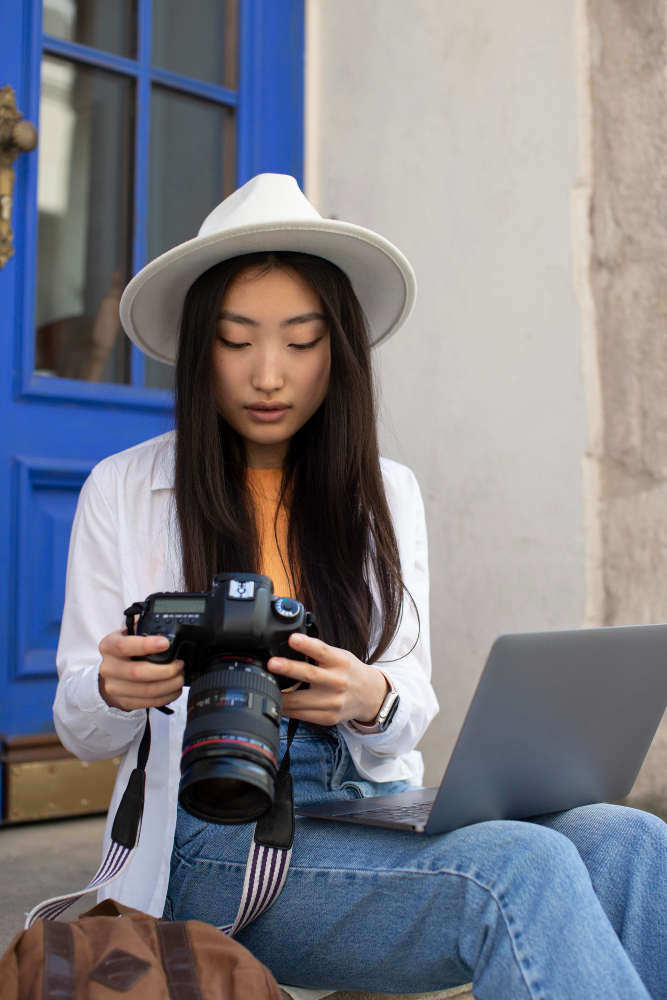No products in the cart.
Lighting and Composition
 If you can come to grips with lighting and composition, you will take great photos with any camera. That is because these two primary technical aspects of photography are common to film and digital photography. Realize too, that there are technical aspects beyond lighting and composition as well, that are common to both mediums of photography. If you can develop good skills in the areas of lighting and composition, you will take great shots with a simple point-and-shoot, film, or digital SLR camera. Lighting and composition is where the playing field between good shots and great shots is equalized across the different types of cameras.
If you can come to grips with lighting and composition, you will take great photos with any camera. That is because these two primary technical aspects of photography are common to film and digital photography. Realize too, that there are technical aspects beyond lighting and composition as well, that are common to both mediums of photography. If you can develop good skills in the areas of lighting and composition, you will take great shots with a simple point-and-shoot, film, or digital SLR camera. Lighting and composition is where the playing field between good shots and great shots is equalized across the different types of cameras.
Do not be anxious to take a photo of a subject. Look for the lighting situation that best flatters the subject. I learned this while sitting in a hospital Waiting Room for several hours for my Wife. In the Waiting Room, I noticed a window casing that had a nice wood grain to it. As the hours passed, I noticed that the Sun had effects on the wood that at times flattered the wood and especially, the wood grain. At other times the Sun grossly dulled and/or removed some the great qualities of the wood and the wood grain. It was this very situation that taught me to seek out the lighting that best flatters my subject. Now, combine this knowledge with correct composition and you will have a photo that is eye catching. Learn about the Rule of Thirds and why this rule is so important to correct composition. It is simple to learn and easy to use. Check your camera’s menu on a digital SLR or point-and-shoot if you do not see a thirds grid in your viewfinder. Consult too, your owner’s manual to find the correct menu.
If you use a point-and-shoot or digital SLR with “Live Preview”, resist the urge to compose your subject with the LCD screen. – Especially at arms length. If your point-and-shoot does not have a viewfinder, hold the LCD screen as close as you can without it becoming blurry to your eyes. This will allow you to stabilize your shot and use the Rule of Thirds to your advantage. Here’s another article on crucial lighting and other tips.
The two accompanying photos show how lighting affects your subject. The stone railroad bridge is a white-ish gray granite to the eye. It is reasonably free of discoloration due to aging and weathering.


With afternoon side-lighting, even the face in the first photo is almost as white as the Sunlit side of the bridge in photo number two. However, look what vertical lighting has done for this white-ish gray surface in photo number one. You can now see the age and weathering coloring on the bricks like no other time-of-day. You can even see that the vertical light provides by water reflection, a natural fill light for the arch. Instead of the upper part of the arch being all black, you can see into the arch. The vertical light also provides a water reflection on the right-side of the arch that again, is not there any other time-of-day. Photo number one was hand-held at 1/250th of a second, f/5.6, and a focal length of 22mm. It was also 1/3 of a stop overexposed using f/stop for exposure control.
Photo number two is the almost always, Sunlit side of the stone railroad bridge. You can see that the colorations from weathering and aging are reduced drastically. This is how the bridge looks to the eye when you are there. You can see again, how vertical lighting reflects off the water and provides a natural fill light to the arch. So it is important with light, to also learn how to take a picture in less than desirable lighting since it could be a vacation spot you may never visit again. While photo one tells a better story of the bridge’s character, photo two does convey to a lesser extent, the same message. Had photo two been the only picture I could have taken of this subject, I would have been happy knowing that I was on vacation and would never be there again. Photo number two was taken at 1/8th of a second, f/22, and 18mm. It was hand-held and both shots were taken between 12:30 and 12:40 P.M. with no filters and are as taken.
Be sure your monitor is adjusted correctly for proper contrast, brightness, color temperature, and gamma. There are many free software packages to help you do this.
Contribution from John L. Peatfield
Additional lighting techniques can be found at digital photography secrets

